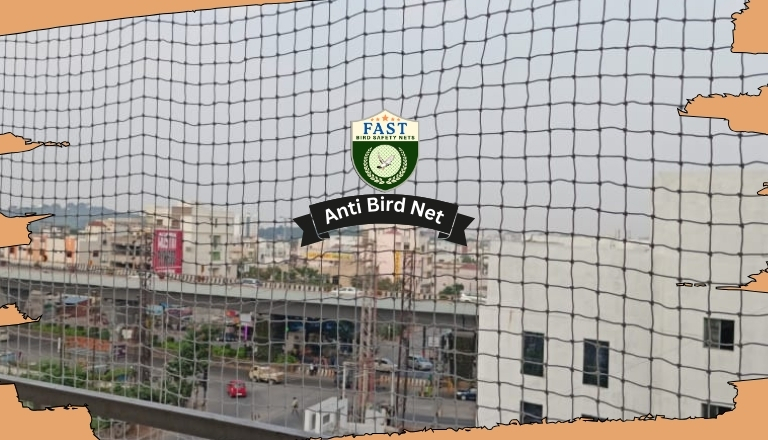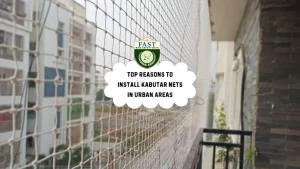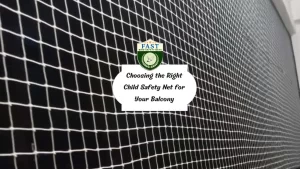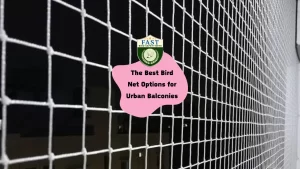Birds can be a charming addition to outdoor spaces, but they can also become a nuisance when they start causing damage to property or posing health risks. Bird proofing is essential for keeping birds away from areas where they’re not welcome while ensuring their safety and well-being. In this article, we’ll explore various effective bird proofing solutions to protect your property.
1. Understanding the Need for Bird Proofing
Birds, such as pigeons, seagulls, and sparrows, can cause a range of problems when they roost or nest on buildings, roofs, signs, and other structures. These issues include:
Damage to property: Birds can cause damage to buildings, roofs, and vehicles with their droppings, nesting materials, and pecking behavior.
Health risks: Bird droppings can harbor bacteria, parasites, and fungi that pose health risks to humans, including respiratory infections and diseases such as histoplasmosis and salmonellosis.
Safety hazards: Bird droppings can create slippery surfaces, posing a slip-and-fall hazard, especially on walkways, stairs, and entryways.
Understanding the need for bird proofing is the first step in implementing effective solutions to mitigate these problems.
2. Bird Deterrents and Repellents
Bird deterrents and repellents are effective tools for discouraging birds from roosting or nesting on your property. Some common bird deterrents include:
Visual deterrents: Reflective devices, such as shiny strips or holographic tape, can scare birds away with flashes of light and movement.
Auditory deterrents: Sonic devices emit sounds that mimic bird distress calls or predator noises, deterring birds from the area.
Physical barriers: Bird spikes, netting, and wire mesh can prevent birds from landing or roosting on surfaces such as ledges, signs, and roofs.
Taste aversions: Chemical repellents applied to surfaces can deter birds with unpleasant tastes or smells, discouraging them from landing or pecking.
Combining multiple deterrent methods can increase their effectiveness in bird proofing your property.

3. Habitat Modification
Modifying the habitat to make it less attractive to birds can also help in bird proofing efforts. Some habitat modification strategies include:
Removing food sources: Keep outdoor areas clean and free of food scraps, spills, and garbage that can attract birds.
Blocking access to nesting sites: Seal off potential nesting sites such as vents, chimneys, and gaps in buildings to prevent birds from establishing nests.
Landscape design: Choose bird-resistant plants and trees that are less attractive to birds for nesting and roosting.
Water management: Fix leaks and eliminate standing water sources that can attract birds looking for drinking and bathing opportunities.
By modifying the habitat to make it less hospitable to birds, you can reduce the likelihood of bird-related problems on your property.
4. Professional Bird Control Services
For more complex bird control challenges or large-scale infestations, seeking the help of professional bird control services may be necessary. Professional bird control companies offer specialized expertise and tools to address bird-related issues effectively. Services they may provide include:
Site assessment: Assessing the extent of the bird problem and identifying factors contributing to bird activity.
Customized solutions: Developing tailored bird control strategies based on the specific needs and challenges of your property.
Installation of deterrents: Installing bird spikes, netting, wires, or other deterrents to prevent birds from roosting or nesting.
Ongoing maintenance: Providing regular maintenance and monitoring to ensure the continued effectiveness of bird control measures.
Professional bird control services can offer peace of mind and long-term solutions for bird proofing your property.
5. Legal and Ethical Considerations
When implementing bird proofing solutions, it’s essential to consider legal and ethical implications. Depending on the location and species of birds involved, there may be regulations governing the control or removal of birds, particularly migratory species protected by law.
It’s also important to ensure that bird control measures are humane and do not cause unnecessary harm to birds or other wildlife. Choosing non-lethal deterrents and repellents and following best practices in bird control can help minimize negative impacts on bird populations and ecosystems.
Conclusion:
Bird proofing is essential for protecting property and mitigating the risks associated with bird-related problems. By understanding the need for bird control, implementing effective deterrents and repellents, modifying habitats, considering professional services when necessary, and adhering to legal and ethical considerations, property owners can effectively manage bird-related issues while promoting safety and well-being for both humans and birds.






